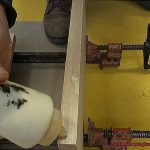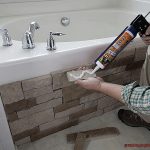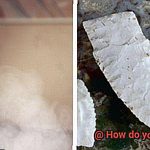Ever been faced with the daunting task of joining two materials that just don’t seem to get along? If you’ve ever tried to glue silicone to plastic, you know the struggle is real. It’s like trying to solve a puzzle without any hints. But fret not, my friend, because today we’re about to spill the beans on achieving the perfect bond between silicone and plastic.
Imagine this: your favorite plastic phone case breaks or you need a watertight seal on a plastic container. Normally, gluing these materials together would be a Herculean task. Silicone, being all rubbery, doesn’t exactly play well with most plastics due to their different chemical makeups. But where others have stumbled, we have triumphed by uncovering the solution that has eluded many.
This blog post will take you through every step of the gluing process, ensuring a bond that’s as strong as Hulk’s grip. We’ll explore various adhesive options and consider their compatibility, effectiveness, and ease of use. Plus, we’ll dive into crucial preparation steps like cleaning surfaces, roughening them up a bit for better grip, and priming them for success.
Stay tuned as we unveil the secrets of gluing silicone to plastic – arming you with knowledge so powerful it could make MacGyver proud. By the end of this journey, you’ll have all the tools and techniques needed to conquer any future bonding challenge involving these seemingly incompatible materials.
Get ready to unleash the potential of this incredible adhesive combo as doors open wide before your very eyes.
What Adhesive Should be Used for Gluing Silicone to Plastic?
Contents
- 1 What Adhesive Should be Used for Gluing Silicone to Plastic?
- 2 How to Prepare the Surfaces for Gluing?
- 3 Applying the Adhesive
- 4 Different Types of Plastics Requiring Different Adhesives
- 5 Using Primer or Adhesion Promoters for Optimal Bonding
- 6 Following Manufacturer’s Instructions on Curing Time and Temperature Requirements
- 7 Tips to Ensure a Strong and Durable Bond Between Silicone and Plastic
- 8 Conclusion
Creating a strong and lasting bond between silicone and plastic requires careful consideration of the adhesive used. With their varying properties, not all adhesives are suitable for this specific application. In this comprehensive guide, we will explore different adhesive options, surface preparation techniques, and expert tips to ensure a successful bond that withstands the test of time.
Silicone-Based Adhesive or Sealant:
For a reliable bond between silicone and plastic, silicone-based adhesives or sealants are an excellent choice. These specially formulated adhesives adhere well to both materials and can be applied easily using a caulking gun or by hand from a tube or cartridge.
Surface Preparation:
Achieving an effective bond begins with proper surface preparation. Thoroughly clean the silicone and plastic surfaces using mild detergent or rubbing alcohol to remove any dirt, dust, or grease. Enhance adhesion by gently roughening the plastic surface with sandpaper or a fine-grit abrasive pad, providing more surface area for the adhesive to grip onto.
Two-Component Epoxy Adhesive:
When strength and durability are paramount, two-component epoxy adhesives are an ideal choice for bonding silicone to plastic. These adhesives are renowned for their robust bonding properties. Follow the manufacturer’s instructions for proper mixing and even application onto the surfaces. Allow ample curing time before subjecting the joint to stress or load, ensuring a secure and long-lasting connection.
Cyanoacrylate (CA) Adhesive:
For quick bonding between silicone and plastic surfaces, consider using cyanoacrylate (CA) adhesives, commonly known as super glue. However, not all CA adhesives are suitable for this specific application, so it is crucial to select one designed explicitly for bonding silicone to plastic. Keep in mind that CA adhesives may not provide the same level of strength as epoxy adhesives and are more suitable for applications with lower load or stress requirements.
Specialized Silicone Adhesives:
![]()
For a foolproof bond that overcomes the challenges posed by silicone and plastic’s differing properties, specialized silicone adhesives are available. These adhesives are specifically formulated to ensure a reliable bond between the two materials. Always adhere to the manufacturer’s instructions regarding surface preparation, application technique, and curing time to achieve optimal results when using a silicone adhesive.
How to Prepare the Surfaces for Gluing?
Ever marveled at how things magically stick together? Whether you’re mending a beloved trinket or embarking on a creative endeavor, understanding the art of preparing surfaces for gluing silicone to plastic is paramount. In this article, we will unveil the secret steps to achieve optimal adhesion. Prepare to embark on a journey into the realm of adhesive mastery.
The Purification Ritual:
Before delving into the world of gluing, cleanliness reigns supreme. Just as a dirty plate repels any attempts to stick something onto it, so too do contaminated surfaces hinder a strong bond. Armed with mild detergent or invigorating rubbing alcohol, unleash your cleaning prowess. Scrub away dirt, dust, and grease to create the pristine foundation necessary for an unbreakable union.
Embracing Imperfection:
Smooth plastic surfaces may seem alluring, but they present a challenge when it comes to adhesion. Fear not. Sandpaper shall be your trusty ally. Like an artist’s brush caressing a canvas, gently guide the sandpaper in mesmerizing circular motions across the plastic surface. These delicate strokes create minuscule scratches that transform into hooks, capturing the glue’s embrace. Remember, moderation is key – preserve the plastic’s integrity.
Banishing Grease:
Silicone harbors an aversion to oily or greasy terrains. Hence, after the cleansing ritual, embark on an extra step – a farewell swipe with a degreaser or isopropyl alcohol. This final touch eradicates any lingering oily residue, ensuring an unyielding bond between silicone and plastic.
A Gentle Dance of Roughness:
Even silicone craves a touch of roughness before surrendering to the power of adhesion. Reunite with your trusted sandpaper and embark on a gentle waltz across the silicone’s surface. Delicate circular motions grace its supple form, etching minute scratches that beckon the glue’s embrace. Witness the transformation as this tactile symphony fortifies the bond, forging an unbreakable connection.
Priming for Superiority (Optional):
The quest for adhesive supremacy occasionally necessitates an extra ingredient – primers. Crafted by adhesive maestros, these specialized elixirs amplify the bond between silicone and plastic. Consult the manufacturer’s instructions diligently and apply the primer with reverence. This additional layer of preparation unveils untapped strength within your adhesive endeavor.
Applying the Adhesive
Applying the Adhesive: Mastering the Art of Bonding Silicone to Plastic
Welcome, adhesive enthusiasts, to the captivating world of applying adhesive for the perfect bond between silicone and plastic surfaces. Prepare yourself for a journey filled with secrets, techniques, and expert tips that will elevate your adhesive game to new heights.
Cleanliness is key in this adhesive adventure. Before reaching for that adhesive, ensure both the silicone and plastic surfaces are squeaky clean. No dust, no dirt, and definitely no oils. A quick wipe with a mild soap solution or suitable solvent will purify them, setting the stage for a strong and durable bond.
Now it’s time to get rough and rugged. Embrace imperfection as you gently roughen up the plastic surface with sandpaper or an abrasive material. This creates more surface area for the adhesive to grip onto, maximizing its effectiveness. Let the dance of roughness add character to your bond.
Next, bring out the star of the show – the silicone adhesive itself. Apply a thin, precise layer to one of the surfaces using a brush or applicator. Remember, moderation is key here. Follow the manufacturer’s instructions for application quantity and method, letting their expertise guide you.
With adhesive applied, it’s time for the grand finale – bringing silicone and plastic together in perfect harmony. Carefully align them and firmly press. To ensure a tight bond during curing, use clamps or other suitable means to hold them in place. Patience is a virtue when it comes to adhesive magic.
Speaking of patience, let it shine during the curing process. The time required for silicone adhesives to fully cure may vary depending on the product used. Allow ample time for complete curing. Resist the temptation to rush ahead; waiting will reward you with a bond that stands strong.
Once the adhesive has fully cured, it’s time for those finishing touches. Remove any excess adhesive with a suitable solvent or carefully scrape it off with a sharp tool. However, exercise caution to avoid damaging the bonded surfaces. Precision is key in this delicate task.
Remember, not all plastics are created equal. Different types may require specific silicone adhesives with compatible bonding properties. Consult the manufacturer’s recommendations or seek professional advice to ensure the perfect adhesive match for your plastic-silicone bonding application.
Different Types of Plastics Requiring Different Adhesives
Have you ever wondered how things are glued together? Well, when it comes to bonding silicone to different types of plastic, it’s not as simple as just using any old adhesive. Different types of plastics have unique properties that require specific adhesives for a strong and durable bond. Let’s delve into the fascinating world of plastics and adhesives to discover how they can come together in perfect harmony.
Understanding the Variety of Plastics:
Plastics are like a diverse family, each member with their own distinct characteristics. We encounter common types such as polyethylene (PE), polypropylene (PP), polystyrene (PS), polyvinyl chloride (PVC), and acrylonitrile butadiene styrene (ABS) in our daily lives. From their chemical compositions to surface properties, these plastics play a crucial role in determining the adhesive required for bonding with silicone.
The Low Surface Energy Challenge:
PE and PP may seem like formidable foes when it comes to bonding with silicone due to their low surface energy. These plastics are notorious for repelling regular adhesives. However, fear not. Specialized adhesives like cyanoacrylates or polyolefin adhesives rise to the occasion, conquering the low surface energy challenge and creating an unbreakable bond between silicone and these plastics.
Versatile PVC and Easy Bonding:
PVC, the Jack-of-all-trades plastic found in pipes and vinyl flooring. This plastic boasts high surface energy, making it more receptive to adhesives. When bonding silicone to PVC, epoxy or polyurethane-based adhesives step up to the plate, ready to create a bond that withstands the test of time.
The Rigid World of Polystyrene:
Polystyrene, the rigid and brittle plastic found in disposable food containers and packaging materials, presents its own unique bonding challenges. With its smooth surface, bonding silicone to polystyrene can be relatively straightforward with certain adhesives like cyanoacrylate or epoxy, which effortlessly form a bond that stands strong.
ABS: Tough and Impact-Resistant:
Meet ABS, the tough and impact-resistant plastic that dominates the automotive parts and toy industries. Fortunately, ABS possesses excellent adhesive properties, making it easier to bond with silicone. Whether you choose cyanoacrylate or epoxy adhesives, rest assured that your silicone and ABS will form a bond that can withstand any challenge thrown its way.
Using Primer or Adhesion Promoters for Optimal Bonding
In our previous expedition, we discovered the challenges faced when bonding silicone to plastic and the quest for a strong, unbreakable union. Today, we embark on a deeper exploration of the secrets to achieving optimal bonding – the transformative powers of primers and adhesion promoters. Prepare to be amazed as we delve into the realm of these magical elixirs that hold the key to perfect bonding.
Unveiling the Magic: Primers and Adhesion Promoters
The struggle to bond silicone to plastic is no match for the mighty primers and adhesion promoters. Let’s unveil their secrets and uncover why they are the ultimate weapons in achieving optimal bonding:
Building a Foundation of Strength:
Primers work wonders as bonding agents applied to the plastic surface before introducing the silicone adhesive. Through a chemical reaction with the plastic, primers alter its surface energy, paving the way for enhanced adhesion. This solid foundation ensures a bond that can endure even the harshest conditions.
Conquering Contaminants:
A pristine surface is vital for successful bonding. Dust, grease, or oils can sabotage your efforts. Thus, meticulous cleaning of both plastic and silicone surfaces is crucial. By banishing contaminants, you create an environment where primers and adhesion promoters can work their magic, optimizing bonding performance.
Masters of Application:
The technique employed during application holds significant sway over your bonding success. Primers are typically brushed or sprayed onto the plastic, while adhesion promoters may require different methods depending on the brand or product. Adhering to the manufacturer’s guidelines ensures precise application and allows adequate drying time for maximum effectiveness.
Unleashing Superior Adhesion:
Adhesion promoters possess powers akin to primers, yet they take it a step further. These formidable allies excel in challenging bonding scenarios, offering even stronger adhesion. Each brand or product may wield its unique chemical composition, making it crucial to select the perfect adhesion promoter tailored to your specific needs.
Following Manufacturer’s Instructions on Curing Time and Temperature Requirements
Today, we’re diving deep into the art of gluing silicone to plastic. But hold onto your hats, because we’re about to unveil a secret ingredient for success: following the manufacturer’s instructions on curing time and temperature requirements. Get ready for a masterclass that will take your bonding game to the next level.
The Importance of Curing Time
The Cure is On: Unleashing Adhesive Superpowers
- Curing time: the unsung hero behind maximum strength and durability.
- Adhesives are not created equal: why following the manufacturer’s instructions is crucial.
- Mastering patience: allowing sufficient time for the adhesive to work its magic.
Handle with Care: Protecting Your Bond
- Stress management: why premature handling can spell disaster for your bond.
- Taming the heat: understanding how curing resists temperature extremes and heavy loads.
- Building a solid foundation: achieving optimal adhesion through proper curing.
The Heat is On: Temperature Requirements
Temperature Tango: Dancing with Your Adhesive
- Temperature’s impact: the game-changer in your adhesive’s performance.
- Following the trail: discovering the recommended temperature range from the manufacturer.
- Breaking bad bonds: how extreme temperatures can sabotage your glue game.
The Goldilocks Effect: Finding Your Perfect Temperature
- Hot or cold? Determining the sweet spot for optimal curing.
- Equipment essentials: heat guns and ovens as allies in achieving the right temperature.
- Adjusting to external factors: considering humidity levels and materials’ influence on curing.
Tips to Ensure a Strong and Durable Bond Between Silicone and Plastic
Establishing a reliable bond between silicone and plastic is crucial for a range of applications, from household repairs to industrial manufacturing. By implementing these techniques, you can guarantee that your bond will hold up over time and withstand various conditions.
Thoroughly Clean the Surfaces:
To ensure maximum adhesion, it is vital to clean both the silicone and plastic surfaces before applying any adhesive. Eliminate dirt, dust, and grease by using a mild detergent or rubbing alcohol. Drying the surfaces completely is equally important as it prevents any moisture from interfering with the bonding process.
Enhance Adhesion by Roughening the Plastic Surface:
To achieve an optimal bond, gently roughen the plastic surface using sandpaper or a fine-grit abrasive pad. This step creates a slightly textured surface that promotes better adhesion. Take caution not to excessively scratch or damage the plastic during this process.
Select an Appropriate Adhesive:
Choosing the right adhesive is pivotal in establishing a strong and durable bond between silicone and plastic. Opt for adhesives specifically formulated for this purpose, such as silicone-based adhesives. Consider factors like flexibility, temperature resistance, and curing time when making your selection.
Achieve an Even Application of Adhesive:
To ensure a secure bond, apply a thin and uniform layer of adhesive to both surfaces. Utilize a brush or applicator suitable for the adhesive type to achieve an even spread. Avoid applying excessive amounts of adhesive as it can lead to uneven drying and compromise the strength of the bond.
Allow Adequate Curing Time:
Follow the manufacturer’s instructions regarding the recommended curing time for the adhesive. The curing time may vary depending on the specific adhesive used. It is essential to avoid disturbing or applying stress to the bonded surfaces during this period to allow the adhesive to set properly.
Test the Bond Strength:
Once the adhesive has fully cured, it is crucial to evaluate the bond strength before subjecting it to any stress or load. Apply gentle pressure or carefully pull on the bonded surfaces to ensure their secure attachment. This step provides reassurance regarding the durability of the bond.
vQ_nXbUdAcA” >
Conclusion
Gluing silicone to plastic may seem like a challenging task, but with the right approach and materials, it can be accomplished successfully. The key lies in choosing the appropriate adhesive that is specifically designed for bonding these two materials.
One option is to use a silicone-based adhesive, which provides excellent adhesion and flexibility. This type of adhesive is commonly used in industries such as automotive, construction, and electronics. It creates a strong bond between silicone and plastic, ensuring durability and longevity.
Before applying the adhesive, it is crucial to prepare the surfaces properly. Start by cleaning both the silicone and plastic surfaces thoroughly to remove any dirt, grease, or residue. This will ensure better adhesion and improve the overall bond strength.
Next, roughen up the surfaces using sandpaper or a fine-grit abrasive pad. This step helps create more surface area for the adhesive to grip onto, enhancing its effectiveness. Be sure to wipe away any debris resulting from this process before proceeding.
Now it’s time to apply the adhesive. Follow the manufacturer’s instructions carefully regarding application techniques and curing times. Apply a thin layer of adhesive onto both surfaces using a brush or applicator. Avoid applying too much adhesive as it can lead to messy results or compromise the bond strength.
Once you have applied the adhesive, carefully press the silicone and plastic together firmly but gently. Ensure that they are aligned correctly before allowing them to dry according to the recommended curing time provided by the manufacturer.
Remember that patience is key during this process. Allow sufficient time for the adhesive to cure fully before subjecting your glued silicone-plastic assembly to any stress or load-bearing activities.
In conclusion, gluing silicone to plastic requires careful preparation of surfaces and selecting an appropriate silicone-based adhesive. By following these steps diligently and allowing adequate curing time, you can achieve a strong and reliable bond between these two materials.





